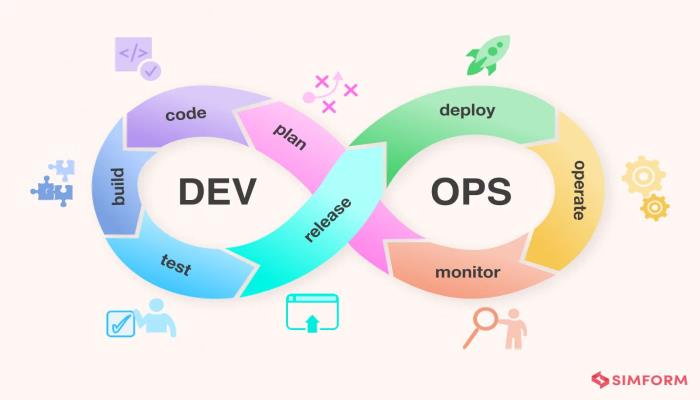Learn what the DevOps lifecycle is and how it works
In the dynamic landscape of software development, understanding the DevOps lifecycle is essential for modern teams striving to streamline processes and deliver value at speed. DevOps represents a cultural and technical shift, automation, emphasizing collaboration and continuous improvement throughout the software delivery pipeline. In this blog, we’ll delve into the intricacies of the DevOps lifecycle, exploring each stage’s purpose and how they seamlessly integrate to enable faster, more reliable software delivery. Join us on this journey as we uncover the principles, practices, and benefits that underpin the DevOps methodology and propel organizations towards greater agility and success.
DevOps certifications serve as structured learning paths, equipping aspiring individuals with the knowledge and skills essential for comprehending the intricacies of the DevOps lifecycle. Through comprehensive coursework and hands-on training, these certifications cover key concepts such as continuous integration, deployment automation, and infrastructure as code. By earning DevOps certifications, individuals gain a deeper understanding of the principles, practices, and tools that drive collaboration and efficiency across development and operations teams. Moreover, certification validates expertise, enhancing career prospects and enabling professionals to contribute effectively to DevOps initiatives, ultimately fostering organizational agility and success in today’s competitive tech landscape.
What is DevOps?
DevOps is one collaborative approach to software development and IT operations, emphasizing communication, automation, and integration. It aims to streamline the entire software delivery process, from code development to deployment. By breaking down the silos between development and operations teams, DevOps accelerates delivery, improves quality, and enhances reliability. Through continuous integration, continuous delivery, and infrastructure as code, DevOps enables organizations to respond rapidly to changing market demands, delivering value to customers more efficiently and effectively.
What is the DevOps lifecycle?
The DevOps lifecycle is a continuous process that integrates development, testing, deployment, and monitoring into a seamless workflow. It begins with planning and coding, where developers write and commit code changes. Next, automated testing ensures code quality before deployment. Continuous integration merges code into a shared repository, triggering automated builds and tests. Continuous delivery deploys changes to production-like environments for testing, leading to continuous deployment if criteria are met. Finally, monitoring and feedback provide insights into system performance, allowing for continuous improvement. This iterative approach fosters collaboration, agility, and efficiency throughout the software delivery pipeline.
DevOps Lifecycle
The DevOps lifecycle encompasses the entire journey from initial software development to delivery, maintenance, and security. The stages of this dynamic lifecycle include:
Plan: In this initial stage, teams outline project goals, define requirements, allocate resources, and establish timelines. Planning involves collaboration between development, operations, and other stakeholders to ensure alignment and clarity of objectives.
Create: During this phase, developers write code based on the project requirements outlined in the planning stage. They leverage version control systems to manage code changes and collaborate effectively, adhering to coding standards and best practices.
Verify: Verification involves automated testing to ensure code quality, functionality, and compatibility across different environments. Testing includes unit tests, integration tests, and acceptance tests, performed continuously to identify and address issues early in the development process.
Package: In this step, code and other artifacts are packaged into deployable units, such as containers or application packages. Packaging facilitates consistent and efficient deployment across various environments, ensuring that software components are bundled together correctly.
Secure: Security is integrated throughout the DevOps lifecycle to mitigate risks and protect against vulnerabilities. Security measures include implementing access controls, encryption, vulnerability scanning, and compliance checks to safeguard data and applications.
Release: The release phase involves deploying changes into production or staging environments. Continuous delivery pipelines automate the release process, enabling teams to deploy updates quickly and reliably while minimizing downtime and disruptions.
Configure: Configuration management involves consistently and scalable management of infrastructure and application settings. Configuration tools automate provisioning, configuration, and orchestration of resources, ensuring agile, reliable, and easily scalable infrastructure.
Monitor: Monitoring is essential for tracking system performance, detecting anomalies, and identifying areas for optimization. Monitoring tools collect and analyze metrics, logs, and events in real time, providing visibility into application and infrastructure health.
Govern: Governance ensures compliance with organizational policies, regulations, and industry standards throughout the DevOps lifecycle. Governance practices include defining and enforcing policies, conducting audits, and managing risks to maintain accountability and alignment with business objectives.
How does DevOps work?
DevOps works by fostering collaboration and integration between development (Dev) and operations (Ops) teams to streamline the software delivery process. It emphasizes automation, continuous integration, delivery, and feedback loops to accelerate development cycles and improve efficiency. Initially, teams collaborate during the planning phase, defining project goals and requirements. Developers then create code, which undergoes automated testing to ensure quality and functionality. Continuous integration merges code changes into a shared repository, triggering automated builds and tests. Next, the packaged application undergoes continuous delivery, with automated deployment to production-like environments for further testing. Security measures are integrated throughout the process to mitigate risks. Once approved, changes are released into production. Continuous monitoring provides real-time insights into system performance, facilitating rapid detection and resolution of issues. Governance practices ensure compliance and alignment with organizational objectives. DevOps operates on iterative cycles, promoting collaboration, agility, and continuous improvement to deliver value to customers more efficiently.
Conclusion
A comprehensive understanding of the DevOps lifecycle is essential for navigating the complexities of modern software development and delivery. A DevOps certification offers a structured learning path, equipping individuals with the knowledge and skills to effectively comprehend and apply DevOps principles and practices. Through coursework and hands-on training, certification programs cover key concepts such as automation, continuous integration, and deployment orchestration, empowering professionals to optimize processes and drive organizational success. By earning DevOps certifications, individuals not only validate their expertise but also deepen their understanding of the DevOps lifecycle, enabling them to contribute meaningfully to collaborative, agile, and efficient software delivery practices.







